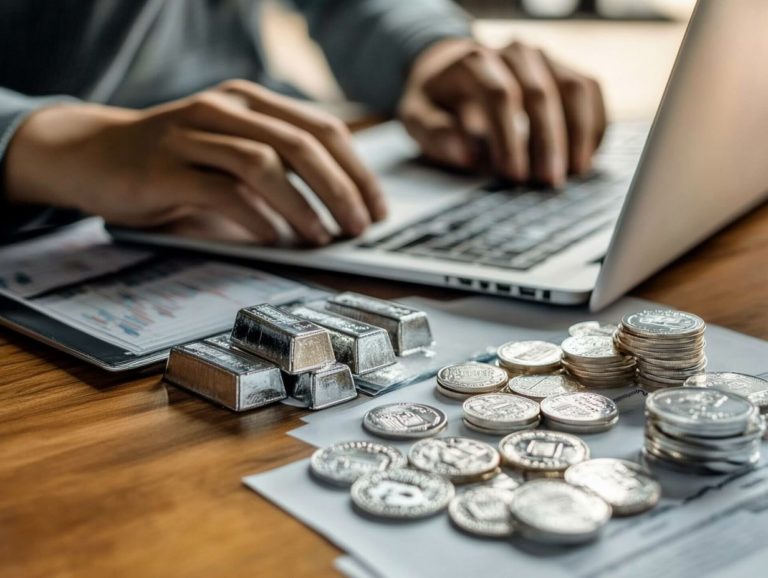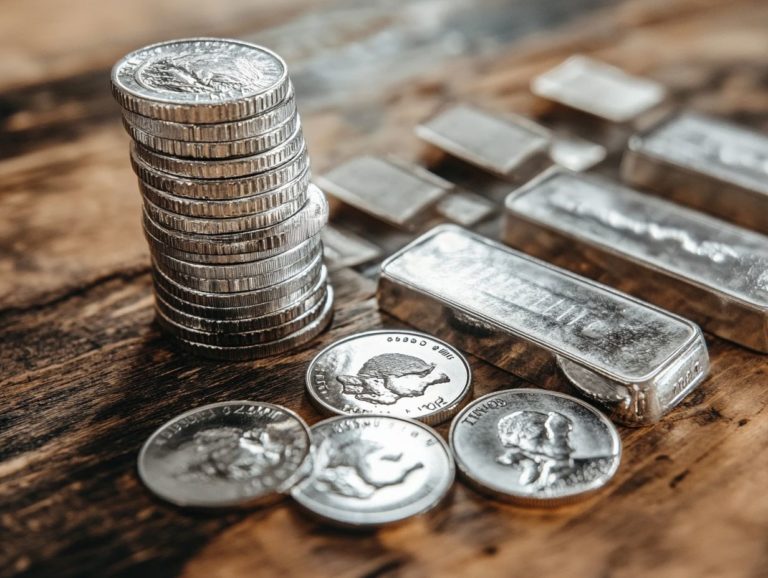Palladium: A Precious Metal for the Future
Palladium is emerging as one of the most captivating precious metals in today s market, recognized for its industrial applications and investment potential. Don t miss out on why palladium could be the precious metal for you!
With its rich history and versatility from devices that help reduce car emissions to electronics palladium holds a pivotal role across various sectors. This article delves into its industrial and commercial applications, investment potential, and the advantages and disadvantages it presents.
You ll also learn about the future of palladium and its potential influence on global industries.
Contents
Key Takeaways:
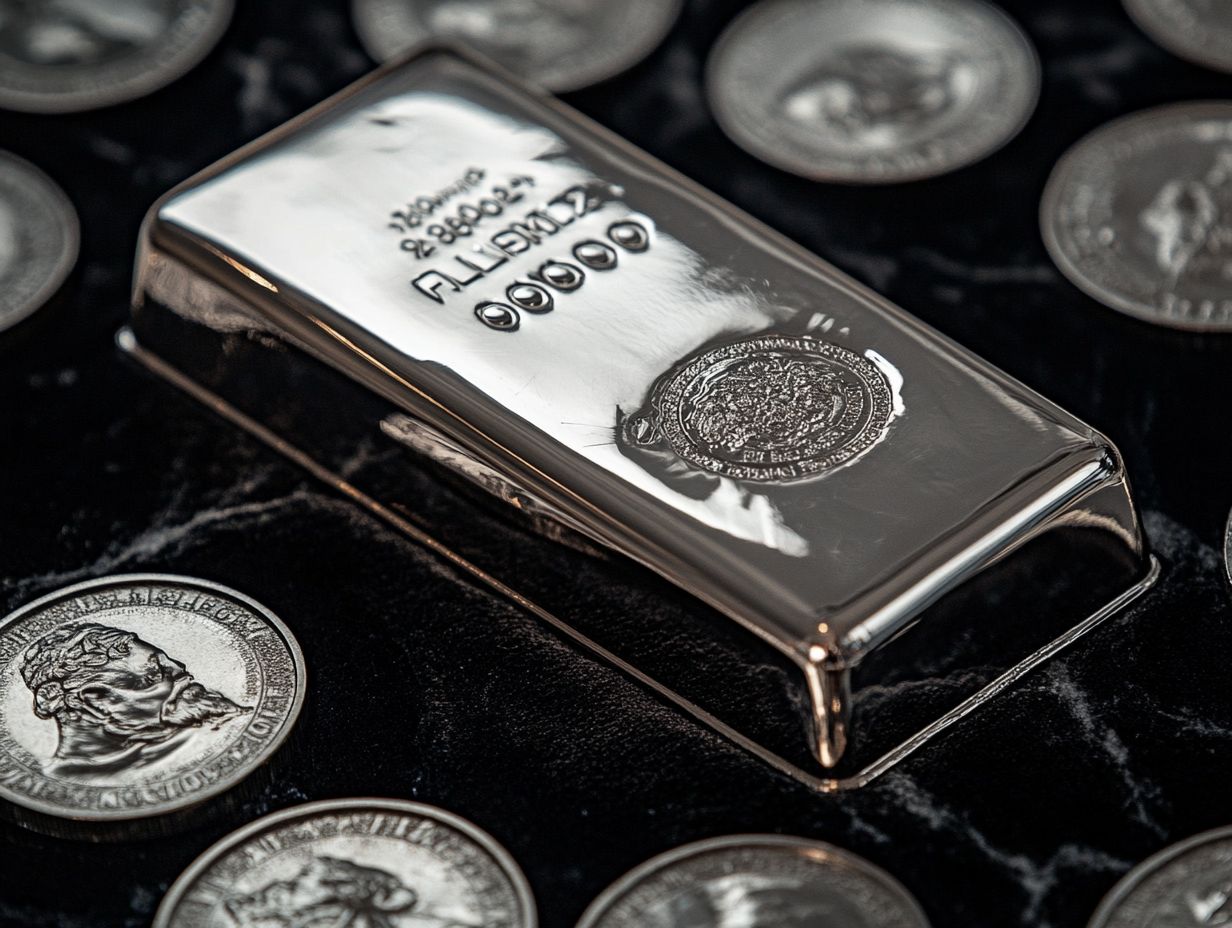
- Palladium is a rare and valuable precious metal, with industrial and commercial uses as well as investment potential.
- With increasing demand and limited supply, palladium has seen a rise in market value and is expected to continue growing in the future.
- While palladium offers diversification and potential for profit, it also carries risks and should be carefully considered in comparison to other precious metals.
What is Palladium?
Palladium is a rare and precious metal that belongs to a group known as platinum group metals (PGMs), which includes valuable metals like platinum. It s distinguished by its striking luster and exceptional chemical properties.
This remarkable metal boasts outstanding catalytic abilities, playing a crucial role in reducing toxic byproducts in vehicle emissions. Palladium also enhances the performance and durability of high-end electronics, such as smartphones and laptops.
Its lightweight nature and impressive conductivity make it a top choice for manufacturers aiming to boost product efficiency and longevity. To put it simply, its lightweight properties help create more efficient products, while its conductivity ensures they work effectively.
The discovery of palladium has spurred advancements across various fields, including dentistry, where it is utilized to develop durable dental alloys. With the growing demand for eco-friendly technologies and innovations in sectors like renewable energy, the importance of palladium is on the rise, solidifying its status as a vital material in modern industry.
History and Uses of Palladium
The history of palladium traces back to its discovery by William Hyde Wollaston in the early 19th century. This marked its introduction into diverse industrial sectors, notably the automotive industry and jewelry. Its aesthetic appeal and functional attributes have made it a highly valued material.
As time has progressed, palladium has taken on a crucial role in catalytic converters, significantly contributing to emission reductions. This development aligns seamlessly with the shifting landscape of environmental policies and regulations focused on improving air quality.
Industrial and Commercial Applications
Palladium is a powerhouse in various industrial and commercial applications, particularly in catalytic converters for the automotive sector. It plays a vital role in significantly reducing harmful emissions, helping vehicles meet stringent environmental regulations.
Its versatility doesn’t stop there. In the high-tech electronics realm, palladium’s durability and conductivity make it the go-to choice for components in hydrogen fuel cells and other cutting-edge technologies.
This remarkable metal is crucial for promoting cleaner air quality by facilitating compliance with ever-evolving emissions regulations. The unique properties of palladium also drive innovations in electronics, especially in the creation of miniaturized components that boost device performance while adhering to environmental standards.
As the demand for sustainable energy sources grows, palladium’s role in hydrogen fuel cells is becoming increasingly significant, propelling advancements in renewable energy solutions that align seamlessly with global sustainability objectives.
Palladium as an Investment
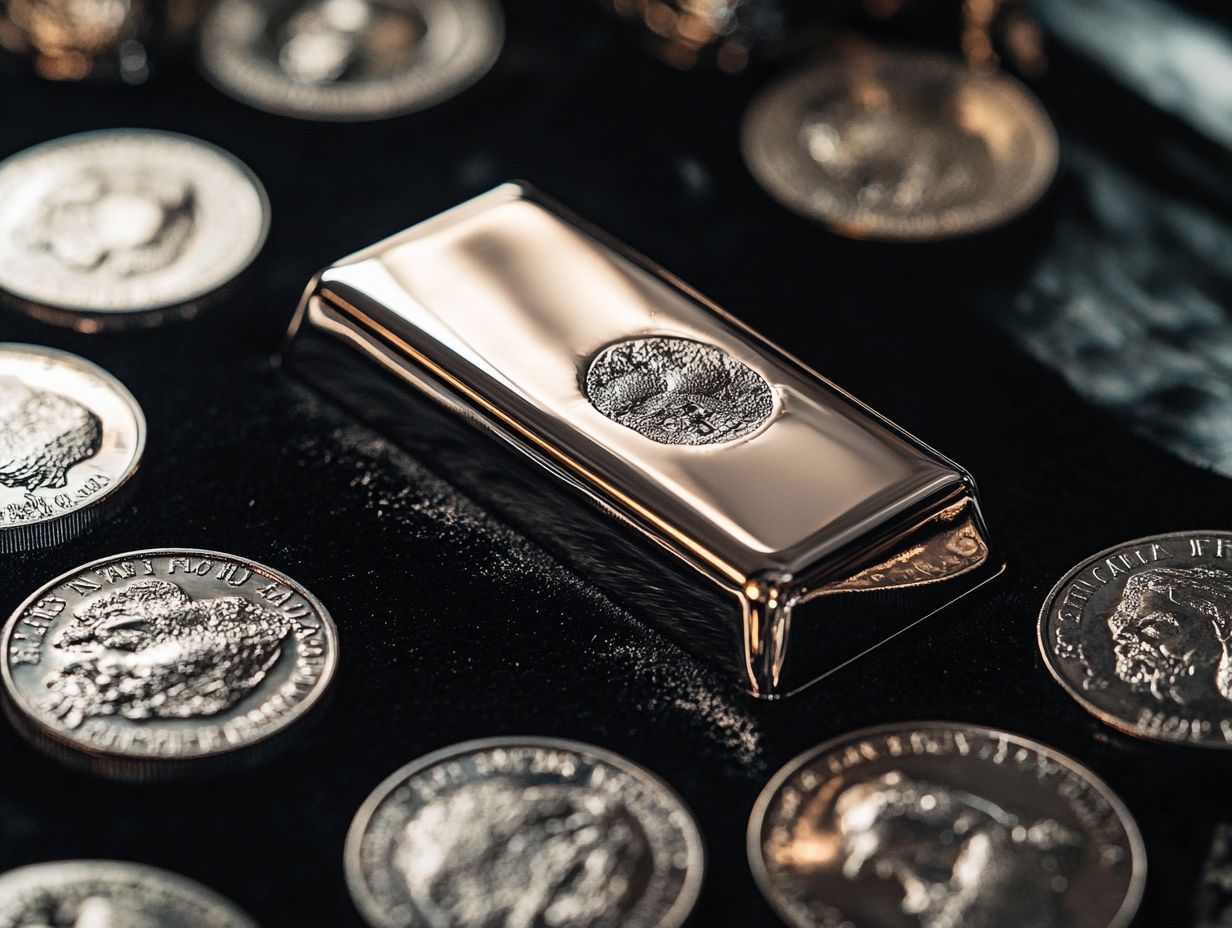
Palladium has emerged as a compelling choice for investors aiming to diversify their portfolios, especially in the face of fluctuating market trends and price volatility within the precious metals sector.
As demand for palladium escalates driven by its essential role in the automotive industry and ongoing technological advancements grasping the nuances of its market dynamics becomes vital for making informed investment decisions.
Market Trends and Value
Palladium’s market trends are influenced by supply and demand. Its key role in catalytic converters for gas-powered cars drives much of this demand.
With rising interest in jewelry and ongoing technological innovations, understanding the price trends and global supply dynamics of palladium can provide valuable insights for potential investors.
As automotive manufacturers shift towards greener technologies and electric vehicles, shifts in palladium demand may affect its price stability. These fluctuations often mirror broader economic conditions, such as industrial output and geopolitical tensions in major producing regions like Russia and South Africa. Keeping an eye on these indicators is essential, as they offer vital context for the performance of this precious metal.
Understanding the changes in investor sentiment surrounding palladium can empower you to make smart moves in your investments, aligning with both your short-term trading strategies and long-term investment goals.
Advantages and Disadvantages of Palladium
Palladium offers a distinctive array of advantages and disadvantages for both investors and industrial users, necessitating thoughtful consideration of these elements before proceeding with any decisions.
Its key role in the automotive sector and tech applications creates strong demand. However, market volatility can challenge sustainable investment.
Pros and Cons of Owning Palladium
Owning palladium offers distinct advantages, such as its potential for impressive returns as a precious metal. However, it also comes with drawbacks, particularly its susceptibility to market fluctuations that could affect your investment portfolio.
For instance, palladium has a history of outperforming other precious metals like gold and silver, providing investors with considerable gains, especially during times of high demand from the automotive industry, where it plays a crucial role in catalytic converters. This attractive performance can lead to unpredictable price swings, influenced by shifts in industrial demand and geopolitical tensions.
While incorporating palladium into a diversified investment strategy may bolster your portfolio s resilience, the limited availability and concentrated production in specific regions can create a precarious market environment. It’s a landscape you ll need to navigate with careful consideration.
Palladium vs Other Precious Metals
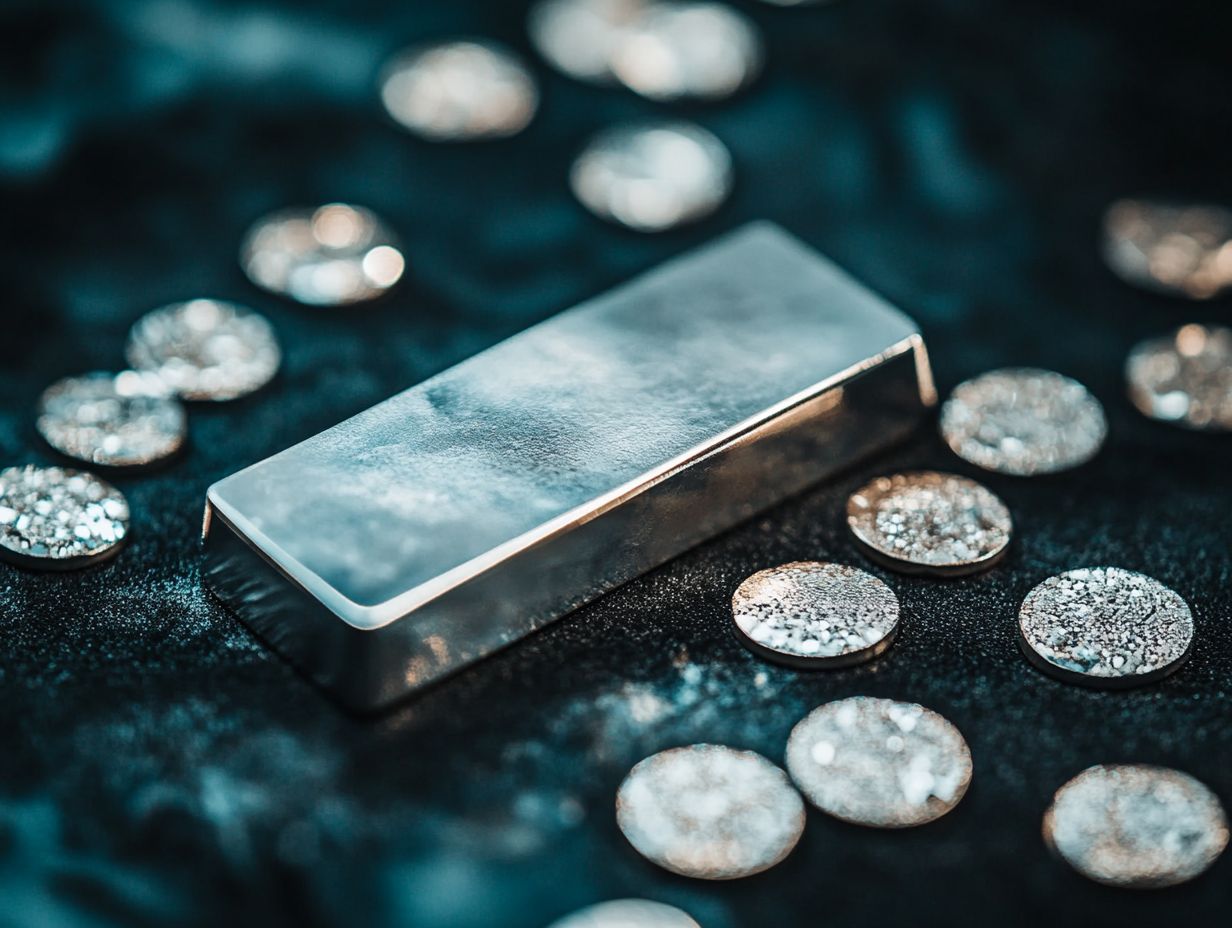
When comparing palladium to platinum, gold, and silver, it’s essential to understand the unique properties that differentiate these investments. Palladium has established a unique position in the automotive sector and high-tech electronics, frequently showcasing price trends that diverge from those of its precious metal counterparts.
Grasping these nuances empowers you to make smart moves in your investments!
Comparison to Gold, Silver, and Platinum
In the realm of precious metals, palladium stands out with unique characteristics that may cater to your specific investment strategies. Its industrial applications and rising demand distinguish it from traditional options like gold, silver, and platinum.
Palladium is primarily used in the automotive industry, particularly in catalytic converters, which help reduce harmful emissions from vehicles. This practical demand adds an intriguing layer to its investment profile that shouldn’t be overlooked.
Silver, with its dual nature as both an industrial metal and a store of value, can introduce volatility into your investment landscape. In contrast, palladium tends to exhibit more stability in certain market conditions, largely due to its limited supply and tightening emissions regulations.
As you analyze price trends, you may notice that palladium has frequently outperformed its peers, prompting considerations about its future potential as a compelling investment choice.
The Future of Palladium
The future of palladium looks promising, especially as its essential role in emerging industries comes to the forefront. With the rising prominence of hydrogen fuel cells and electric vehicles both pivotal to the green technology movement you can expect significant growth in demand.
Keeping a keen eye on market trends will be crucial for understanding how these developments will influence the supply and demand dynamics of palladium.
Potential Growth and Impact on Industries
The potential for palladium’s growth is intricately tied to its diverse applications across various industries, particularly as hydrogen fuel cells and clean technologies gain momentum.
With governments around the globe committing to reducing carbon emissions, the demand for efficient energy solutions escalates. This further amplifies palladium’s significance in green technologies. Its exceptional catalytic properties are vital in the production of hydrogen fuel cells, which are becoming increasingly popular in electric vehicles a sector poised for remarkable growth.
This convergence of sustainability and innovation unveils enticing investment opportunities. Industries that harness palladium are perfectly positioned to thrive amidst shifting market dynamics.
If you’re looking to capitalize on advancements in clean energy, it s essential to keep a watchful eye on the palladium market, especially as its importance continues to rise.
Frequently Asked Questions
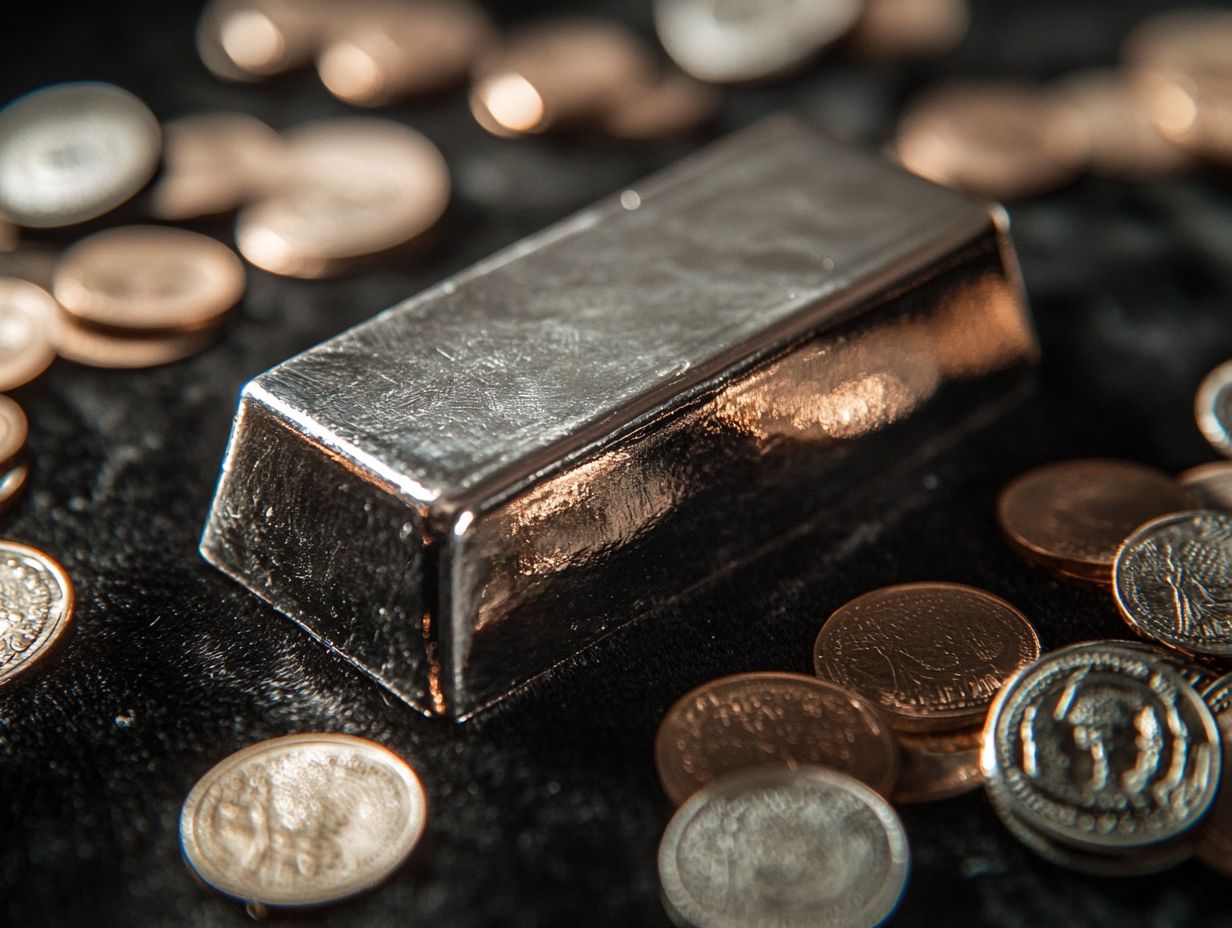
What is Palladium?
Palladium is a rare and lustrous silvery-white precious metal that belongs to the platinum group of elements. It has a wide range of industrial and commercial applications, making it a highly sought-after metal in the global market.
How is Palladium different from other precious metals?
Palladium is unique because it has a lower density and melting point compared to other precious metals like gold and platinum. It is also more resistant to corrosion and oxidation, making it a popular choice for various industries.
What are the main uses of Palladium?
Palladium is primarily used in the automotive industry for making catalytic converters. These devices help reduce harmful emissions from vehicles. Additionally, it is used in electronics, dentistry, jewelry, and as an investment in the form of palladium bullion or coins.
Why is Palladium considered a precious metal for the future?
Palladium is increasingly being used as a substitute for the more expensive and rare platinum in various industries, especially in the automotive sector. The demand for palladium is expected to continue to rise, making it a valuable and important precious metal.
Where is Palladium found?
Palladium is primarily found in Russia, South Africa, Canada, and the United States. It is also found in smaller quantities in other countries, including Australia, Brazil, and China.
How does the demand and supply of Palladium affect its price?
Similar to other precious metals, the price of palladium is largely influenced by the balance between demand and supply. Any fluctuations in global demand or supply can significantly impact its price in the market.
Investing in palladium could be your golden ticket to future success! Stay informed about the palladium market and consult with a financial advisor to explore investment opportunities.










